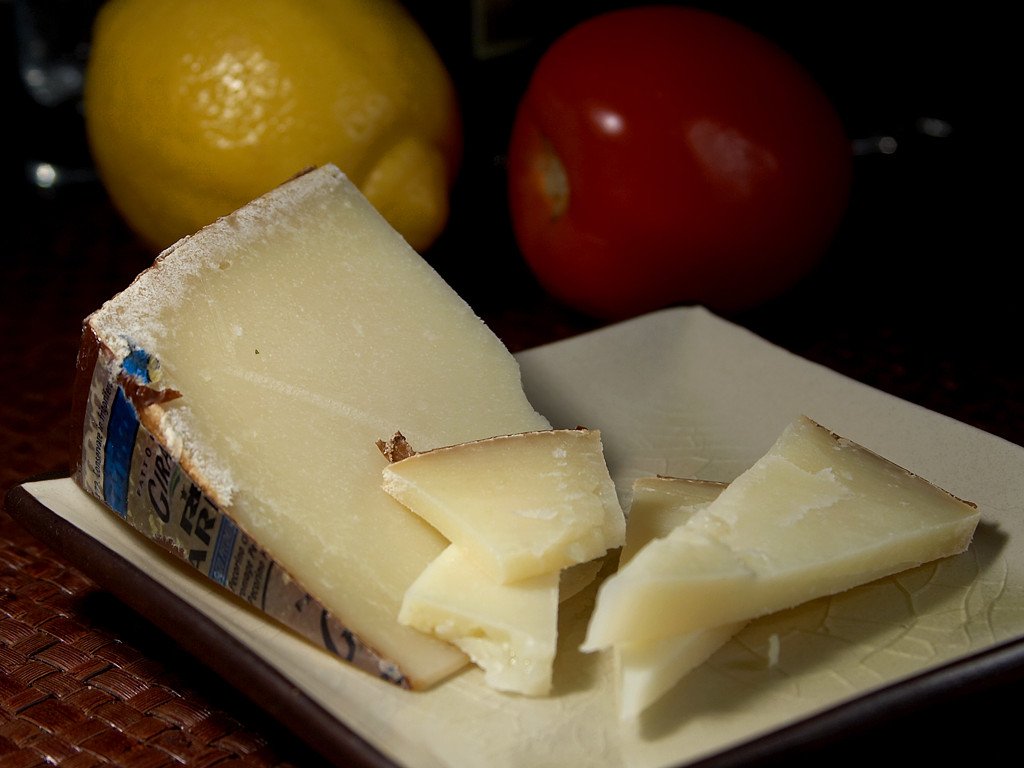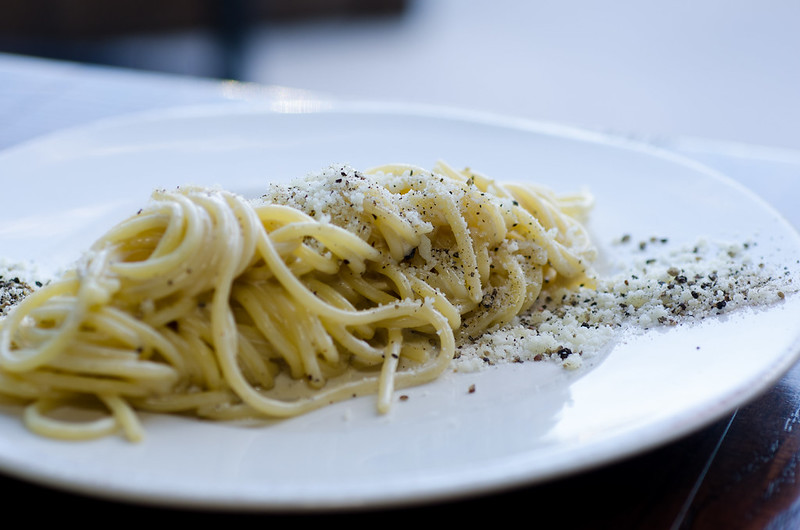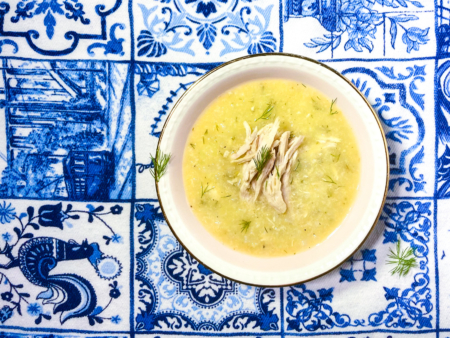In the course of a typical Italian meal, you will go from aperitivo, with a light drink or two and a few small snacks, on to dinner, which comes in a series of courses: antipasti, primi, secondi, contorni, and dolce. Pasta falls into the primi category, and in Rome, one of the most popular choices is a dish that dates back to the Roman Empire called cacio e pepe.
Dubbed by celebrity chef Anthony Bourdain to be “the greatest thing in the world,” cacio e pepe is a simple, classic dish that involves just four ingredients: pecorino Romano cheese, pepper, salt, and tonnarelli pasta. While the tonnarelli noodle is not required, it is the preferred shape and texture to blend and hold the luscious sauce—and if you’ve spent any time in Italy, you know Italians have very particular guidelines as to which pasta goes best with which sauce.

While formaggio is the Italian word for cheese, cacio is the equivalent in the Roman dialect. Pepe translates to pepper, so the name is straight to the point: cheese and pepper. The ancient recipe originated with shepherds out on long journeys. Dried pasta, black pepper, and aged pecorino could keep for long periods of time, and they lent themselves easily to a hearty, sustaining meal. Carbonara is another famous pasta dish that originated with shepherds, who could carry a hunk of pork, along with their cheese and pepper, and grab an egg along the way. The food writer Maureen Fant told PRI’s The World that it’s important to remember that “this kind of food represents social history. It’s the history of a people, and when it all gets mixed up, we forget who these people are, and who they were, and how they started, and all the hard work they did.” Ordering cacio e pepe or carbonara today, it’s true that most are unlikely to understand the modest beginnings of these dishes, especially as they are served in Italian restaurants around the world and occasionally by chefs mixing the ingredients directly in a large rind of pecorino cheese for showmanship.

When making cacio e pepe at home, be wary of recipes that suggest the use of cream, butter, or oil—they are not at all necessary to achieving the rich sauce. Instead it’s the magical alchemy of hot salted water, the pasta’s starch, and the dry, room temperature cheese that create just the right texture to coat every noodle. Although the ingredients are simple, mastering the perfect consistency of the cheese and pepper sauce may take some practice. Fear not. Once you perfect this recipe, you’ll not only have a go-to meal for life, you’ll be part of a storied tradition as old as Rome itself.
Feature Image: Popo le Chien – Own work (CC BY-SA 3.0)



